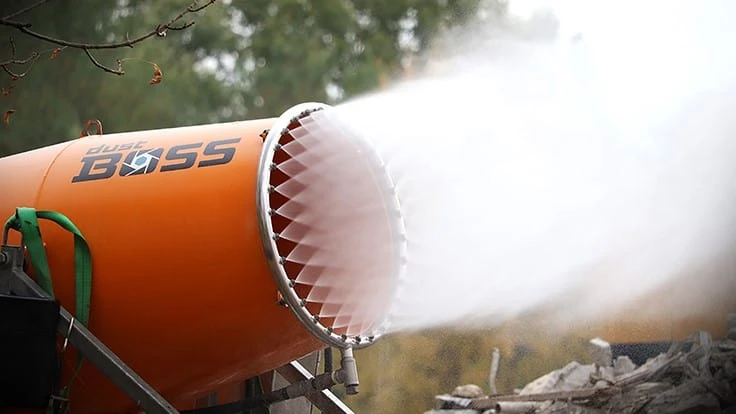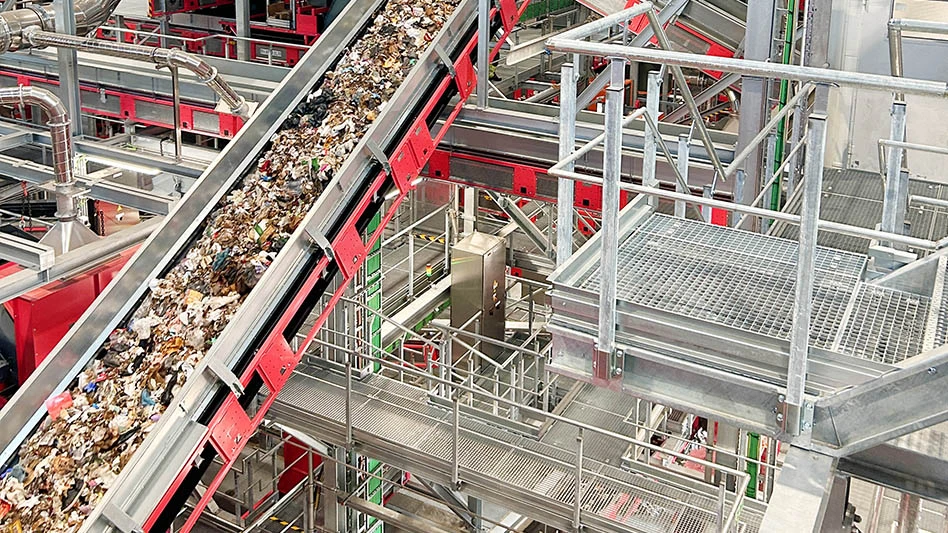
BossTek, Peoria, Illinois, has announced that it is introducing an optional variable frequency drive (VFD) system to its lineup of dust suppression equipment that allows users to adjust airflow to suit a broader range of applications and working environments.
Driven by customer input from a number of different industries, the company says the new VFD system reduces the need to purchase or rent different models to match the machines’ output to specific project requirements, delivering greater flexibility and reducing the total cost of equipment ownership.
“Atomized mist technology has been widely accepted as an extremely effective approach to dust management,” BossTek Sales Manager Mike Lewis says. “This new development will allow users to tailor the fan speed to match the job. It’s useful in a number of different industries, but one good example would be demolition projects.
“Project managers may need the wide coverage and long reach of our larger models on some jobs, but the volume and throw distance may be too much for smaller projects, such as those in crowded downtown locations," he continues. "Instead of using a smaller machine to accommodate their changing needs, now they can simply dial back the airflow to match the requirements of those smaller projects.”
Lewis says the VFD is likely to be attractive to companies with variable needs, including concrete curing, cannabis and hemp operations, transfer stations, slag handling and indoor applications.
The VFD control will be available via a simple dial or remote control on three of the company’s DustBoss models: the DB-30, DB-45 and DB-60. All three use specialized nozzles and a ducted fan design to atomize the water flow into droplets 50-200 microns in size. According to the company, being able to match the droplet size to the most common particle sizes delivers the greatest opportunity for them to collide and fall to the ground.
“In some applications, a high airflow speed is a distinct advantage, delivering a long throw,” Lewis says. “But in others, the speed and volume may be a disadvantage. Now, users can dial in the speed and throw distance as their requirements change. The variability will range from just a few RPMs up to the maximum delivered by each model.”
Additionally, the company says the VFD modular design facilitates installation and configuration, with communications options that include a dual-port EtherNet/IP card for networking flexibility. An LCD human interface module supports multiple languages and features scrolling text to explain parameters and codes. Flexible motor control options include volts per hertz, sensorless vector control and economizer mode to suit a variety of applications.
Latest from Waste Today
- US Senate backs reduced cuts to EPA
- ELV Select Equipment, Reworld aid NYPD in secure firearm disposal
- Waste Connections announces Q2 results
- Returnity and Cosmoprof to address reusable bag waste
- SWANA releases report on aging WTE facilities
- New economic assessment reveals cost benefits of California’s SB 54
- Premier Truck Sales & Rental opens new facility
- TeknTrash Robotics, Sharp Group partner on humanoid robot pilot





